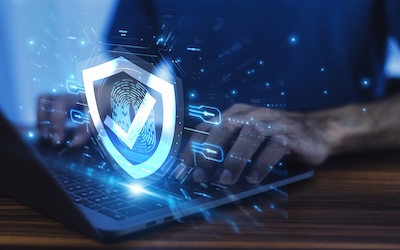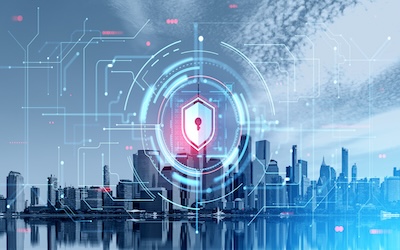Utility companies sit at the heart of modern life. Power grids, water systems, and energy networks don’t just enable our homes and businesses to function — they underpin entire economies. But this critical role also makes utilities a prime target for ransomware gangs. And as recent figures show, attackers are doubling down on the sector.
According to Sophos’ State of Ransomware in Critical Infrastructure 2024 report, 67% of energy, oil, gas, and utility organisations were hit by ransomware in the past year. That’s not an anomaly — it’s the same rate as 2023, showing the sector is stuck in a cycle of relentless targeting. Even more worrying is the cost of recovery: the average breach now costs $3.12 million to remediate, with median costs in energy and water sectors spiking to $3 million — four times higher than the global cross-sector median.
These numbers are eye-watering, but they also tell a deeper story: utilities are dealing with a perfect storm of complexity, legacy risk, and operational exposure that makes ransomware especially difficult to contain.
The Unique Challenges Facing Utilities
- Legacy Infrastructure Meets Modern Threats
Many utilities run on decades-old operational technology (OT) systems that were never designed with cybersecurity in mind. These systems can’t be easily patched or replaced, but they remain connected — and vulnerable. Attackers know that a single foothold in outdated OT can cascade into massive disruption.
- A Converged IT/OT Environment
The boundary between IT and OT is no longer clear. Smart grids, IoT sensors, and cloud platforms are transforming utilities, but they also expand the attack surface. A misconfigured cloud identity can now provide a pathway into critical control systems. Traditional monitoring approaches simply aren’t equipped to track risks across this hybrid landscape.
- High Stakes, Low Tolerance for Downtime
When a retailer suffers an outage, sales are lost. When a utility goes down, entire cities grind to a halt — and regulators, governments, and the public demand immediate answers. This pressure means utilities often face greater extortion leverage from ransomware gangs. Paying the ransom can feel like the only way to restore services quickly.
- Regulatory Pressure
With regulations like NIS2 in the EU and the growing focus on operational resilience in the UK and US, utilities can’t afford gaps in their cybersecurity posture. Regulators want assurance not just that controls exist, but that they are effective at all times. Point-in-time audits no longer cut it.
Why Traditional Security Approaches Aren’t Enough
Most utilities already have layers of security controls: firewalls, SIEM platforms, identity management, endpoint protection. But the challenge isn’t just having the tools — it’s knowing that they’re working as intended, continuously, across an extremely complex environment.
The reality is that many breaches don’t happen because controls are missing. They happen because controls drift, degrade, or get misconfigured. A dormant privileged account here, an unpatched OT device there — these are the gaps attackers exploit. And in utilities, even a single gap can have outsized consequences.
The Stark Reality of a Cyber Attack
Here’s some stats that will curl the toes; only 20% of energy, oil, gas, and utility organisations fully recovered from a ransomware attack within a week in 2024, down from 41% in 2023.
A substantial 55% took more than a month to recover—this is a significant increase from 36% in 2023.
This stark data reflects increasingly complex attacks on legacy infrastructure, where recovery isn’t simply about restoring systems—it’s about ensuring safe, secure service restoration without compromising OT environments.
Enter Continuous Controls Monitoring (CCM)
This is where Continuous Controls Monitoring changes the game. CCM provides utilities with real-time visibility into whether critical security and compliance controls are actually functioning, across IT, OT, and cloud environments.
Instead of relying on quarterly checks or annual audits, CCM continuously tests and validates controls, surfacing evidence the moment something drifts out of compliance. For utilities, this offers three critical benefits:
- Proactive Risk Detection
CCM helps spot vulnerabilities before attackers do — whether that’s an over-entitled identity in Active Directory, an unmonitored endpoint, or an IoT device falling out of policy. - Operational Resilience
By aligning controls to frameworks like NIS2, ISO 27001, or sector-specific resilience standards, utilities can demonstrate to regulators that they have continuous assurance over their cyber defences. This goes beyond “box-ticking” and directly strengthens resilience. - Faster, Evidence-Based Response
In the event of an incident, CCM provides utilities with a live evidence trail showing which controls failed, where, and why. That accelerates investigations and supports recovery without guesswork.
Shifting from Reactive to Resilient
The ransomware challenge facing utilities is real — and the statistics show it isn’t easing up. But while attackers continue to innovate, defenders now have the tools to move from a reactive posture to a resilient one.
Continuous Controls Monitoring isn’t about replacing existing security investments; it’s about ensuring they work, consistently, under pressure. For utilities tasked with keeping the lights on and the water flowing, that assurance is no longer optional — it’s mission critical.
Final Thought: The $3 million median recovery cost isn’t just a financial metric — it’s a warning sign. Utilities can’t afford to treat ransomware as a probability they’ll simply have to absorb. With CCM, they have the chance to break the cycle, reduce exposure, and provide regulators, boards, and the public with the one thing that matters most: confidence. Take a look at our CCM platform here.



















